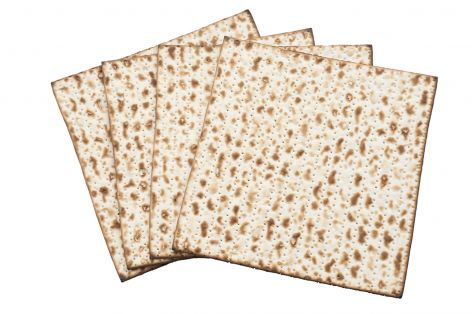What the Biblical Spring Festivals Mean to Us
The people behind this site don’t keep the traditional spring holidays like Easter. Here’s an inside look at the days we do keep and why they mean so much to us.

What words come to your mind when you think of spring? You may think of things like bunnies and Easter egg hunts.
But those aren’t the things that come to my mind. I think of things like Passover, leavening, deleavening and matzo.
As Christians, one of our distinctive practices is observing the seven annual festivals outlined in Leviticus 23. For us, these are more than just holidays that come around once a year; our lives center on these days.
It all begins with the spring festivals, then moves on a few weeks later to Pentecost. We then push through the hot summer months leading to the fall festivals, and then endure the cold winter, starting all over again in the spring. (Of course, for our brethren in the southern hemisphere, the seasons are reversed.)
That is how I measure time every year.
As I write this, we are gearing up for the two early spring festivals: Passover and the Feast of Unleavened Bread.
Let me explain what these days mean to us.
The Passover—a memorial to our Savior
For our Jewish friends, the Passover symbolizes the Exodus of the Israelites from ancient Egypt. That’s because in the Old Testament, the Israelites were told to observe this day as a memorial of their deliverance from Egypt (Exodus 12:11-14). But why do thousands of Christians keep the Passover today?
For us the events of the Exodus foreshadowed what Jesus Christ would do nearly 1,500 years later. Just as God freed Israel from bondage in Egypt (following the death of the firstborn from which the Israelites were spared by the blood of the Passover lambs), God offers freedom to us from an even greater form of bondage—slavery to sin (Romans 6:6, 15-18). We can only be released from that bondage through the death of Jesus Christ (Ephesians 2:13; Hebrews 9:14).
As Christians, one of our distinctive practices is observing the seven annual festivals outlined in Leviticus 23.
In fact, the Bible directly connects the Old Testament Passover to Jesus Christ: “For indeed Christ, our Passover, was sacrificed for us” (1 Corinthians 5:7, emphasis added). We continue to keep the Passover with the symbols that Jesus instituted the night before His death (Matthew 26:26-28; 1 Corinthians 11:24-25).
We don’t approach the Passover lightly. Before we gather to observe the Passover, we go through a period we often call our pre-Passover self-examination. We examine our lives in the weeks leading up to the Passover to identify and strive to overcome our sins and analyze where we need to grow (1 Corinthians 11:28; 2 Corinthians 13:5).
This year (2024) we will observe the Passover after sunset on the evening of April 21. This might seem a bit confusing because technically the Passover is on April 22. In biblical time reckoning, though, days begin and end at sunset. So although we are observing the Passover on the evening of April 21 according to the Gregorian calendar, we are actually observing it at the beginning of the next day, the 14th of Abib, according to the Hebrew calendar.
Yes, I realize that can be confusing. That’s why we mark it on our calendars! (You can see the dates of all the festivals on our handy “Festival Calendar.”)
The Feast of Unleavened Bread—putting sin out and putting righteousness in
Immediately following the Passover, we keep the Feast of Unleavened Bread for seven days (Exodus 12:17-18; Leviticus 23:6). That may sound like a strange name for a festival, so let me explain.
Leavening is an ingredient that causes breads to rise, or puff up. Examples of leavening are yeast, baking powder and baking soda. For seven days we literally remove all leavened products from our homes because the Bible tells us to: “For seven days no leaven shall be found in your houses” (Exodus 12:19).
Of course in ancient times, when people lived in small, simple dwellings, this was relatively easy. Today with larger homes filled with furniture and plenty of nooks and crannies, removing leavening can be a bit trickier!
We search out the big leavened products—loaves of bread, pancake mixes, bagels, baking soda—and make sure those are gone by the time the feast begins. But we also try to be diligent in getting out as much of the remnants, or crumbs, of leavening as we possibly can.
So if you knock on our doors over the weeks approaching April 23, you may find our stoves pulled out of place and us on our knees vacuuming up any crumbs that might have fallen behind them during a year of cooking. You may also see us in our driveways tediously vacuuming out our cars, trying to suction up as many crumbs as is humanly possible.
You may think this sounds (and looks!) a bit odd, but we do this for a reason.
The Bible compares leaven to sin (1 Corinthians 5:8). As we clean under our sofa cushions or between the seats of our cars, we don’t just think about crumbs, we think about our lives. As we clean out the obvious things, we think about the very obvious sins that we need to purge from our lives. When we use the narrow vacuum attachment to get the small crumbs out from under our car seats (probably the most awkward place to vacuum with any degree of accuracy), we think about all the seemingly small sins in our lives that we need to search out and purge.
But that’s not all there is to it! The Feast of Unleavened Bread also teaches us to eat unleavened bread for that week (Leviticus 23:6). So that’s what we do. We eat bread that has no leavening in it whatsoever!

Well, generally speaking, unleavened bread is very flat—making pita look like a slice of Texas French toast!
The most typical kind of unleavened bread is matzo (specially made for this time of year). A matzo looks like an abnormally large cracker—and generally doesn’t win many taste competitions. That being said, it is edible, and there are many ways to prepare it that are reasonably decent. Some people even enjoy the taste. I like to spread butter and melt cinnamon sugar on it and sometimes even make it into a pizza (definitely not Chicago style, though).
But before I get too carried away with matzo preparation tips, it’s more important to discuss what the matzos (and other forms of unleavened bread) mean to us.
We already covered the fact that during these seven days, leavened bread symbolizes sin. Unleavened bread symbolizes the exact opposite—righteousness. The apostle Paul described it as “the unleavened bread of sincerity and truth” (1 Corinthians 5:8). It’s all about putting off sin and putting on righteousness (Colossians 3:9-10). It’s about living like Jesus Christ, the “bread of life” (John 6:35).
When we eat those crunchy pieces of matzo, or the occasionally softer homemade variety, we try to think about how our lives should be just like the flat substance we are eating: just as our bread is devoid of leaven, we should be devoid of sin.
Two pieces of a bigger puzzle
The special days I’ve described in this post are the first of seven annual festivals we keep every year. Seven weeks after we keep the Feast of Unleavened Bread, we will observe the Feast of Pentecost. Then in the fall, we will observe the Feast of Trumpets, Day of Atonement, Feast of Tabernacles and Last Great Day (or Eighth Day). These days are also loaded with meaning to us.
But we will save those explanations for another blog post in another season.
We would love for you to learn more about these days that mean so much to us.
Date Posted: April 22, 2024



